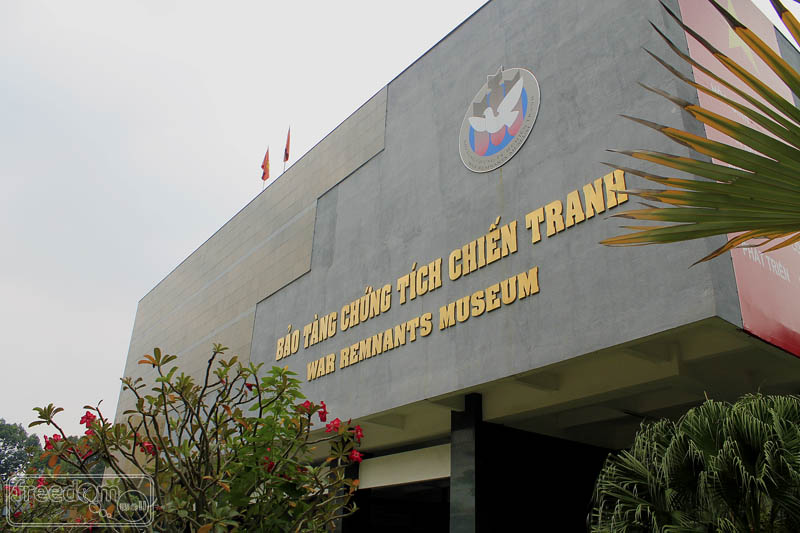Teary-Eyed in the War Remnants Museum

Whatever is causing the conflict, don’t ever resolve it with war – that is what I learned when I visited the War Remnants Museum in Ho Chi Minh City, Vietnam last December 2013.
We only had a day in Ho Chi Minh – technically, just a half day. We arrived in the southern Vietnamese city from Phnom Penh passed 1:00 in the afternoon so we had to hurry to make such half-day productive. We had museums, shopping centers, dining areas, and some interesting parks on our list but our priority were the Reunification Palace and the War Remnants Museum.
For us to properly move around the city, we changed our available cash to the local currency. We spent some our precious time to look for money changers.

Our first stop was the Independence or Reunification Palace then headed to the War Remnants Museum afterwards. After settling the admission fee of VND30,000 (US$1.2/PhP60) at the entrance, we explored the exhibit around the museum.
Several decommissioned warfare armaments like battle tanks, fighter planes, bombers, attack helicopters, and unexploded bombs are displayed within the museum’s yard. These were the machines used during the war.
The southwestern side of the museum shows a model of a prison that depicts war atrocities and inhumane execution of the prisoners. Displayed in the inner portion of the prison is a gallery of graphical illustrations showing the ill effects of poisonous sprays (such as Agent Orange) and bombs (napalm and phosphorus bombs).
If you want to learn horrendous torture techniques, you can learn some here.
[one_half]
[/one_half]
[one_half_last]
[/one_half_last]
After seeing the exhibit outside the edifice, we checked the gallery on the ground level of the main building. The first floor showcases some Vietnamese traditional dresses on one side while the rest of the corners display photographs from different countries – photographs of people protesting or calling to stop the oppression in Indochina, particularly in Vietnam. Students, NGOs, head of states, and parliaments of various countries (US ally or not) participated this call.
The second level of the museum showed images of war oppression and cruelty. My first teardrop fell while scanning through the photographs in the gallery. Children and innocent people being massacred – siblings lost their siblings, fathers lost their sons, children got orphaned, and mothers got widowed.
A mother’s torment is, perhaps, a lot more painful than any other victims of war. Nguyen Hoang Huy understood it clearly that he sculpted a miserable “Mother” out of the bomb fragments.
[one_half]
[/one_half]
[one_half_last]
[/one_half_last]
Riffles, various artilleries, mortars, ammunitions, and other weapons used during the war were also displayed inside the glass shelves and cabinets.
The third level is a collection of photographs captured by journalist around the word who volunteered to cover the war. Some of them died while on duty. This gallery is called “Requiem”.
The photos are really touching that I couldn’t hold my tears any further. Since big boys don’t cry, I had to take cover to wipe my teary eyes.
The other side of the gallery exhibits post-war photos which are equally sentimental. These delineate that even though people recovered from their physical wounds, the unpleasant memories and trauma continue to haunt them forever.
We left the building when the PA announced the museum’s closing. We did not notice the time. We just gave in to the emotion as we journey through Vietnam’s hard times. In fact, I couldn’t walk for a moment after that experience.
While walking around the city, Jollibee Vietnam suddenly came to Roderick’s mind and insisted to visit the place and see what it offers. We agreed to have some light snacks and look for a local restaurant for another awesome munch later. Unfortunately, it rained and we got lazy to move around. So instead of snacks, we ordered dinner.
Since we had no hotel accommodation in Ho Chi Minh, we headed directly to the airport and waited for our early morning flight.